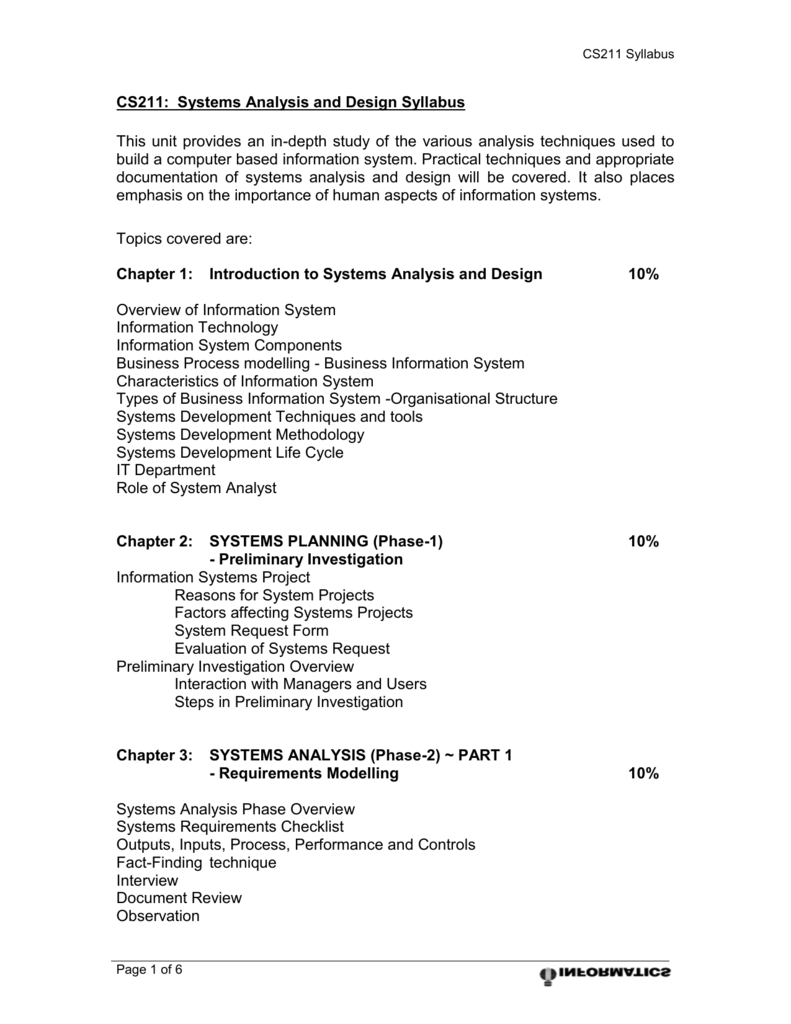Table Of Content

Each phase of development proceeds in strict order, without any overlapping or iterative steps. System Design is the process of creating a design for the system to meet the requirements. System design is the process of designing the architecture, components, modules, interfaces, and data for a system to satisfy the specified requirements. It involves the design of the system architecture, components, modules, interfaces, and data. Material on security and privacy in relation to designing ecommerce applications is included. Additionally, current topics of interest to designers of ecommerce applications, including the development and posting of corporate privacy policies, are covered.
Spiral Model[edit edit source]

This approach articulates the steps for designing almost any system from scratch, whether you’re working on a client project or sitting for system design interviews. After determining the feasibility and fine-tuning requirements, system analysts produce the SRS. This document enables system design engineers to begin working on the design for the new or updated system. Ad hoc, is something that one can use to do a specific task but the process that was used cannot be used for another process. One can use a template to create a project but with Ad Hoc, it is not possible.
System Documentation
That’s why it’s good to take a step back and analyze the big-picture impact of good design on the long-term efficiency, longevity, and success of software and information systems. System design and the requirements that it targets don’t exist in a vacuum. As a software engineer, it works to your advantage to know why certain requirements are being targeted, how they relate to the business goals of your organization, and how these decisions impact the overall user experience. Are you a software engineer interested in advancing in your career and getting an advantage in the job market?

Knowledge Management
Forward osmosis system analysis for optimum design and operating conditions - ScienceDirect.com
Forward osmosis system analysis for optimum design and operating conditions.
Posted: Thu, 15 Nov 2018 08:00:00 GMT [source]
In my projections, I also assume that this competitive space will top the Adjusted EBITDA margin at 43% for all ten years. In Figure 6, you can see the value of Cadence at $183 per share, a 35% discount over the current price. All rights are reserved, including those for text and data mining, AI training, and similar technologies. For all open access content, the Creative Commons licensing terms apply. Operations documentation contains all the information needed for processing and distributing online and printed output. Operations documentation should be clear, concise, and available online if possible.
Organization
Consulting Opportunities, diagrams, and problems enable students to learn and use UML to model systems from an object-oriented perspective. Students learn the appropriate situations for using an object-oriented approach. This chapter helps students to decide whether to use the SDLC, the agile approach, or object-oriented systems analysis and design to develop a system. Systems Analysis and Design presents you with the latest systems development methods, tools and techniques in an engaging and easy-to-understand manner. With this concise but comprehensive text, the Kendalls offer you a practical, modern approach to mastering systems analysis and design. Design elements, pedagogical features and activities are integrated throughout to help to support and enhance learning.
Download Product Flyer
Sustainable Systems U-M SEAS Environmental Management - University of Michigan School for Environment and Sustainability
Sustainable Systems U-M SEAS Environmental Management.
Posted: Tue, 09 Jun 2020 23:36:36 GMT [source]
This interactive course offers a modern perspective on designing complex systems using various components in a microservices architecture. You’ll learn all about the building blocks and RESHADED approach discussed in this article, and have opportunities to apply these concepts to real-world design problems. As discussed earlier, system analysis is an early and fundamental phase in the SDLC. In the context of software engineering, system analysts review a technological system for various purposes, ultimately proposing a solution to a problem using a computer system. In other words, they identify what is required to serve the client and customer needs. After feasibility studies and requirements engineering, they record this information in a system requirements specification (SRS) document.
Check it out now on O’Reilly
Systems design is most effective when more than one solution can be proposed. The plans for the care and feeding of a new system are as important as the problems they solve. See systems analyst, system development life cycle, information system and Systemantics.
If you made a one‑time payment for your initial 4‑month term, you'll now pay monthly. To make sure your learning is uninterrupted, please check your card details. There are several definitions of system analysis like another definition is its examination of a specific system to observe the sectors of modifications and prepare any essential enhancements, if required. Before arranging, you have to comprehend the old system altogether and decide how computers can best be used to work productively. Thus, system design centres around how to achieve the target of the system.
Physical or Abstract Systems
The output of one subsystem is the required by other subsystem as input. For example, in an organization, purchasing department must interact with production department and payroll with personnel department. It is a process of collecting and interpreting facts, identifying the problems, and decomposition of a system into its components.
Modern programming usually requires an object oriented approach to software development. Object-oriented development attempts to use the classifications, relationships, and properties of objects to aid in program development. The objects contain both attributes and operations that interact to meet a specific need. Attributes are properties that relate to the object and operations are methods or actions that the object can perform to modify itself or data. Access to the data within an object is available only via the objects operation also known as the interface to the object.
To visualize the desired outcome, think of creating a unique combination of distinct components. To make this visualization more tangible, we’ll call these components building blocks, representing similarities shared across system design problems that have been extracted for easier reuse. As its name implies, system design is a process that should happen systematically.
This section describes a number of security considerations that will help integrate information security into each phase of the SDLC. It is not uncommon for an organization to state an objective and operate to achieve another. Interdependence means how the components of a system depend on one another. For proper functioning, the components are coordinated and linked together according to a specified plan.

No comments:
Post a Comment